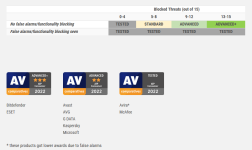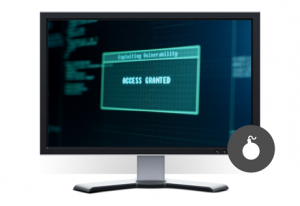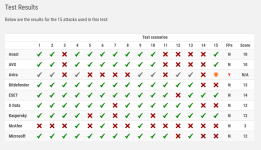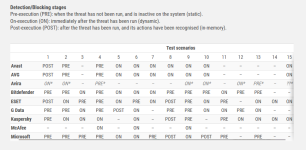- Mar 16, 2019
- 4,058
Read the full report here:“Advanced persistent threat” is a term commonly used to describe a targeted cyber-attack that employs a complex set of methods and techniques to penetrate information system(s). Different aims of such attacks could be stealing/substituting/damaging confidential information, or establishing sabotage capabilities, the last of which could lead to financial and reputational damage of the targeted organisations. Such attacks are very purposeful, and usually involve highly specialised tools. The tools employed include heavily obfuscated malicious code, the malicious use of benign system tools, and non-file-based malicious code.
In our Advanced Threat Protection Test (Enhanced Real-World Test), we use hacking and penetration techniques that allow attackers to access internal computer systems. These attacks can be broken down into Lockheed Martin’s Cybersecurity Kill Chain, and seven distinct phases – each with unique IOCs (Indicators of Compromise) for the victims. All our tests use a subset of the TTP (Tactics, Techniques, Procedures) listed in the MITRE ATT&CK® framework. A false alarm test is also included in the report. The tests use a range of techniques and resources, mimicking malware used in the real world. Some examples of these are given here. We make use of system programs, in an attempt to bypass signature-based detection. Popular scripting languages (JavaScript, batch files, PowerShell, Visual Basic scripts, etc.) are used. The tests involve both staged and non-staged malware samples, and deploy obfuscation and/or encryption of malicious code before execution (Base64, AES). Different C2 channels are used to connect to the attacker (HTTP, HTTPS, TCP). Use is made of known exploit frameworks (Metasploit Framework, PowerShell Empire, commercial frameworks, etc.).......................................
Tested Products
The following vendors participated in the Advanced Threat Protection Test. These are the vendors who were confident enough in the protection capabilities of their products against targeted attacks to take part in this public test. All other vendors in the Consumer Main-Test Series opted out of the test.
All consumer products were tested with default settings.


Advanced Threat Protection Test 2022 - Consumer
AV-Comparatives' Advanced Threat Protection Test 2022 for Consumer security products released, testing the protection against advanced attacks
 www.av-comparatives.org
www.av-comparatives.org


